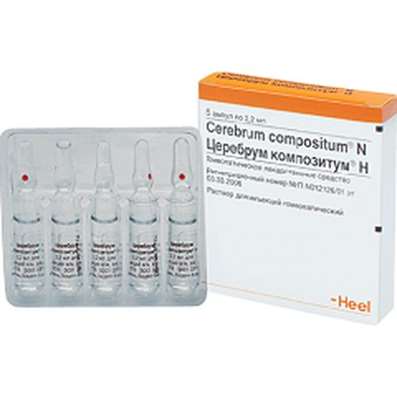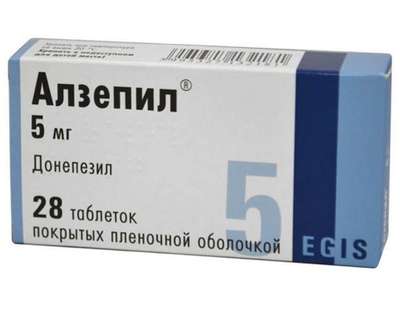Instruction for use: Rederm
I want this, give me price
Active substance Betamethasone + Salicylic acid
ATX code D07XC01 Betamethasone in combination with other drugs
Pharmacological group
Glucocorticosteroids in combinations
Nosological classification (ICD-10)
L20 Atopic dermatitis
Itchy atopic eczema, Common neurodermatitis, Allergic skin diseases, Allergic skin diseases of non-infectious etiology, Allergic skin diseases of non-microbial etiology, Allergic skin diseases, Allergic skin lesions, Allergic manifestations on the skin, Allergic dermatitis, Allergic diathesis, Allergic itching dermatosis, Allergic Skin Disease, Allergic skin irritation, Dermatitis allergic, Atopic dermatitis, Dermatosis allergic, Diathesis exudative, Skin Allergic Disease, Skin allergic reaction to medicinal and chemical preparations, Skin reaction to medication, Skin and allergic disease, Acute eczema, Chronic atopic dermatitis, Exudative diathesis, Itching allergic dermatosis
L20.8 Other atopic dermatitis
Constitutional neurodermatitis, Chronic neurodermatitis, Restricted neurodermatitis, Allergic eczema, Atopic eczema, Children's eczema, Diffuse neurodermatitis, Neurodermatitis, Neurodermatitis diffuse, Neurodermatitis limited, Neurodermatitis, Dermatosis of a neurogenic origin
L23 Allergic contact dermatitis
Allergic dermatitis, Purulent allergic dermatopathies, Contact allergic reaction, Contact allergic dermatitis, Photoallergic contact dermatitis
L28.0 Simple chronic lichen
Common lichen, Chronic and simple lichen, Chronic lichen
L30.1 Dyshidrosis [pomfolix]
Skin dyshidrosis, Pomfolix, Eczema dysgidrotic, Dyshidrotic eczema, Infected dyshidrosis, Dyshidrosis, Dyshidrotic dermatitis
L30.9 Dermatitis, unspecified
Allergic dermatoses complicated by a secondary bacterial infection, Anal eczema, Bacterial maturation, Varicose Eczema, Venous dermatitis, Inflammation of the skin, Inflammation of the skin upon contact with plants, Inflammatory Skin Diseases, Inflammatory skin reactions, Inflammatory processes of the skin, Hypostatic dermatitis, Fungal Eczema, Fungal dermatosis, Dermatitis, Dermatitis is stagnant, Dermatitis and eczema in the anal area, Dermatitis acute contact, Perianal dermatitis, Dermatosis, Dermatosis of the scalp, Dermatosis of psoriasis, Dermatosis with persistent itching, Dermatoses, Dermatoses itchy, Other itching dermatoses, Significant eczematous manifestations, Itching with, dermatoses, Itching eczema, True eczema, Skin reaction to insect bites,Skin itching with dermatosis, Constitutional eczema, Weeping eczema, Drowsing inflammatory skin disease, Dying Infectious-Inflammatory Skin Disease, Non-allergic dermatitis, Nummular eczema, Acute contact eczema, Acute inflammatory skin disease, Acute dermatosis, Acute severe dermatosis, Perianal dermatitis, Superficial dermatosis, Subacute Contact Eczema, Simple dermatitis, Occupational dermatitis, Psychogenic dermatosis, Bubble dermatitis of newborns, Pustular eruptions, Irritation and redness of the skin, Low-flammable eczema, Dry atrophic eczema, Dry eczema, Toxic dermatitis, Ear eczema like dermatitis, Chronic eczema, Chronic dermatosis, Chronic common dermatosis, Scaly papular dermatosis, Eczema, Eczema anal region, Eczema of the hands, Eczema Contact, Eczema lichenized, Eczema Nummular, Eczema acute, Eczema acute contact, Eczema subacute, Eczematous dermatitis, Eczema-like rashes, Ecome exogenous, Endogenous eczema, Gluteal dermatitis, Restricted itchy dermatitis
L40 Psoriasis
Chronic psoriasis with diffuse plaques, Generalized psoriasis, Psoriasis of the scalp, Psoriasis of the scalp, Generalized form of psoriasis, Psoriasis dermatitis, Psoriasis complicated by erythroderma, Invalidative psoriasis, Isolated psoriatic plaque, Exfoliative psoriasis, Psoriatic Erythroderma, Psoriasis with eczematosis, Hyperkeratosis in psoriasis,Inverse psoriasis,Psoriasis eczematous, Dermatosis of psoriasis, Psoriasis of the genitals, Psoriasis with lesions of hairy areas of skin, Erythrodermal psoriasis, Chronic psoriasis of the scalp, Chronic psoriasis, Ordinary psoriasis, Refractory psoriasis, Kebner phenomenon, Scaly lichen
L43 Red Leaf Flat
Lishay Wilson, Erosive-ulcerative form of red flat lichen, Warty forms of red lichen, Red lichen, Flat lichen, Kebner phenomenon
L43.0 Lycent hypertrophic red flat
Warty lichen
L50 Urticaria
Idiopathic chronic urticaria, Injury Urticaria, Chronic urticaria, Hives of the newborn
L51 Erythema multiforme
Stevens-Johnson syndrome, Malignant exudative erythema, Multiforme exudative erythema, Erythema multiforme, Multiforme exudative erythema, Stevens-Johnson Syndrome, Exudative multiform erythema, Erythema is polymorphic
L85.0 Acquired ichthyosis
Ichthyosis, Ichthyosis and ichthyosis lesions, Ichthyosis and ichthyosis of the skin, Ichthyosis and ichthyosoform changes, Ichthyosiform erythroderma, Ichthyosiform dermatosis
L85.2 Point-to-point keratosis (palmar-plantar)
Hyperkeratosis of the skin, Hyperkeratoses, Hyperkeratosis, Tylotic Eczema, Hyperkeratosis in psoriasis
R23.8.0 * Dryness of the skin
Dry skin on large areas of the skin, Dryness of the skin in violation of the integrity of its covers, Dryness of the skin,Skin peeling
Composition
Ointment for external use 100 g
Active substances:
Betamethasone 0.05 g
(In the form of betamethasone dipropionate)
Salicylic acid 3 g
Auxiliary substances: paraffin liquid (vaseline oil); Vaseline (petrolatum white, paraffin white soft)
Description of dosage form
Ointment: almost white, translucent, homogeneous.
pharmachologic effect
Pharmacological action - antiallergic, antipruritic, keratolytic, anti-inflammatory local.
Pharmacodynamics
Combination drug for external use, the effect of which is due to its constituent components; The drug has anti-inflammatory, anti-allergic, antipruritic, keratolytic action. Betamethasone inhibits the release of inflammatory mediators, prevents the accumulation of neutrophils, reduces inflammatory exudate and production of cytokines, reduces the migration of macrophages, leading to a reduction in infiltration and granulation.
Thanks to the presence of salicylic acid, softens the skin, eliminates horny layers and promotes deeper penetration of betamethasone.
Indications
Therapy of subacute and chronic dermatoses accompanied by hyperkeratosis and desquamation:
- psoriasis;
- Dyshidrotic dermatitis;
- eczema;
- Neurodermatitis;
- Red flat lichen;
Ichthyosis and ichthyosis skin lesions;
- atopic dermatitis;
- diffuse neurodermatitis;
- simple and allergic dermatitis;
- hives;
- multiforme exudative erythema;
- simple chronic lichen (limited neurodermatitis);
Dermatoses that are not amenable to treatment by other SCS (especially red warty lichen);
Skin dyshidrosis.
Contraindications
Hypersensitivity;
Open wounds;
Bacterial, viral and fungal skin diseases (pyoderma, syphilis, skin tuberculosis, chicken pox, herpes, actinomycosis, blastomycosis, sporotrichosis);
Postvaccinal skin reactions;
Perioral dermatitis;
Rosacea;
Trophic ulcers on the background of chronic venous insufficiency;
Skin tumors (skin cancer, nevus, atheroma, epithelioma, melanoma, hemangioma, xanthoma, sarcoma);
Lactation period;
Children under 2 years.
With caution: liver failure; Children's age (over 2 years); Long-term therapy, especially with the use of occlusive dressings.
pregnancy and lactation
The safety of the use of local SCS in pregnant women is not established. The appointment of this group of drugs during pregnancy is justified only if the potential benefit to the mother exceeds the potential risk to the fetus. During pregnancy, drugs of this group should not be used in high doses or for a long time.
It is not established whether local application of GCS can cause them to appear in the mother's milk, therefore, the question of stopping breastfeeding should be addressed.
Side effects
Burning, irritation, dryness, hypopigmentation, skin itching, folliculitis, hypertrichosis, dermatitis, acne-like eruptions.
When applying occlusive dressings - maceration of the skin, striae, skin atrophy, secondary infection, sweating.
With long-term use - skin atrophy, local hirsutism, telangiectasia, purpura, hypopigmentation, hypertrichosis.
When applied to large areas - systemic manifestations of side effects of SCS (growth retardation, Itenko-Cushing syndrome, increased ICP after completion of treatment, hyperglycemia, glucosuria, hypokalemia, increased blood pressure) or salicylates (pallor, fatigue, drowsiness, hyperventilation against tachypnea, Nausea, vomiting, hearing loss, confusion).
Interaction
Interaction of the drug with other drugs is not revealed.
Dosing and Administration
Outwardly.
Apply to the affected areas at the rate of: a column of ointment 0.5 cm long on a skin area of about 7 × 7 cm, slightly rubbed, a thin layer 2 times a day. Another frequency of use can be determined by the doctor, based on the severity of the disease. In light cases, the ointment is sufficient to apply, as a rule, 1 time per day; With more severe lesions may need more frequent use.
If necessary, impose occlusive dressings, which are changed every 24 hours.
The duration of treatment depends on the effectiveness and tolerability of therapy and is 2-4 weeks.
If clinical improvement does not occur, it is necessary to clarify the diagnosis.
Special patient groups
Children. Children from 2 years of age, the drug is prescribed only by strict indications and under medical supervision. It is possible to develop systemic side effects associated with betamethasone. The duration of treatment should be as short as possible. When applying the drug on extensive surfaces and / or under the occlusive dressing, it is possible to suppress the function of the hypothalamic-pituitary-adrenal system and the development of symptoms of hypercorticism, there may be a decrease in the excretion of growth hormone, an increase in ICP.
Overdose
Symptoms: Acute overdose is unlikely, but with excessive or prolonged use of the drug, chronic overdose is possible, accompanied by signs of hypercorticism - hyperglycemia, glucosuria, reversible suppression of adrenal cortex function, manifestation of Cushing's syndrome.
Treatment: the appropriate symptomatic treatment is indicated. In the case of chronic toxic effects, a gradual withdrawal of the drug is recommended.
special instructions
Avoid contact with the eye, do not apply to the skin near the eyes and mucous membranes. The drug is not intended for use in ophthalmology.
With prolonged treatment, application of the drug to the vast skin surface, the use of occlusive dressings, systemic absorption of GCS is possible.
It is not recommended for long-term use on the skin of the face - it is possible to develop dermatitis by the type of rosacea, perioral dermatitis, atrophy of the skin and acne; Should be avoided in the anogenital area.
Ointment is most suitable for the treatment of patients with dry and fragile skin.
If there are signs of increased sensitivity or skin irritation associated with the use of the drug, you should stop treatment and find the patient adequate therapy.
With prolonged use of the drug, it should be canceled gradually.
Form of issue
Ointment for external use. In tubes of aluminum, 5, 15 or 30 g. Each tube in a pack of cardboard
Conditions of leave from pharmacies
Without recipe.
storage Conditions
At a temperature not higher than 25 ° C.
Keep out of the reach of children.
Shelf life
2 years.
Do not use after the expiry date printed on the package.

 Cart
Cart





